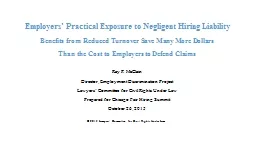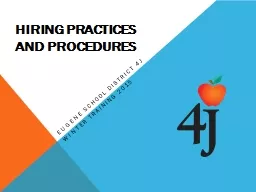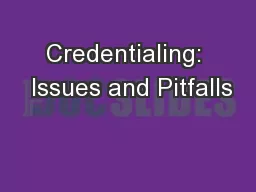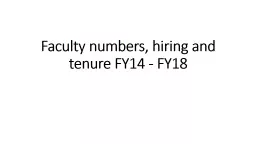PPT-Employers’ Practical Exposure to Negligent Hiring Liability
Author : alexa-scheidler | Published Date : 2019-12-17
Employers Practical Exposure to Negligent Hiring Liability Benefits from Reduced Turnover Save Many More Dollars Than the Cost to Employers to Defend Claims
Presentation Embed Code
Download Presentation
Download Presentation The PPT/PDF document "Employers’ Practical Exposure to Neg..." is the property of its rightful owner. Permission is granted to download and print the materials on this website for personal, non-commercial use only, and to display it on your personal computer provided you do not modify the materials and that you retain all copyright notices contained in the materials. By downloading content from our website, you accept the terms of this agreement.
Employers’ Practical Exposure to Negligent Hiring Liability: Transcript
Download Rules Of Document
"Employers’ Practical Exposure to Negligent Hiring Liability"The content belongs to its owner. You may download and print it for personal use, without modification, and keep all copyright notices. By downloading, you agree to these terms.
Related Documents














